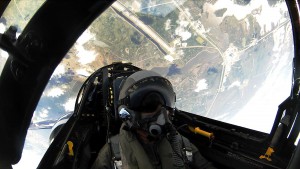Select
- Past Research Flights
- Space Epigenetics
- Sub-orbital Spaceflight
- Hypobaric Plant Biology
- Transgenic Arabidopsis Gene Expression System (TAGES)
- Characterizing Arabidopsis Root Attractions (CARA)
- Spectral Imaging with EDEN-ISS
- Biological Research In Canisters (BRIC) – 16 & 17
- NASA Flight Opportunity Program – F104 Starfighter and Zero-G Flights
Past Research Flights
You can view this spreadsheet in another window by clicking here.
This project seeks to use an unbiased genome-wide approach to define the changes in DNA methylation that occur in Arabidopsis during spaceflight in order to better understand the spectrum of responses that allow adaptation to the spaceflight environment. The current study underway in the lab will build on previous research in Epigenetics that compared the methylome of specific plant cell types. This study contributed to our fundamental understanding of how biology responds and adapts to the spaceflight environment. Currently, the next study focuses on whether the epigenetic changes induced by spaceflight in one generation of Arabidopsis are inherited in the next. This study will be house in the Plant Habitat on board the ISS in the near future.
Revelent Publications
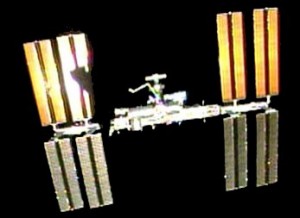
The objective of this project is to use suborbital spaceflights in Virgin Galactic’s SpaceShip Two and other suborbital vehicles to develop an understanding of the genomic and metabolic plant responses upon entry into and recovery from spaceflight. The long term goal of this line of research is a comprehensive appreciation of the biological responses that occur as terrestrial life experiences spaceflight. We are building on our previous genomic work with Arabidopsis plants by imaging GFP-tagged promoters from specific genes indicated as potentially involved in early spaceflight transitions and by fixing plants during suborbital flight for whole genome expression analysis. These data will provide insights into the effects of early stage spaceflight responses so as to begin to round out a more comprehensive understanding of the temporal and transitional plant responses to spaceflight.
Revelent Publications
Paul A-L, et al., (2011) Parabolic flight induces changes in gene expression patterns...
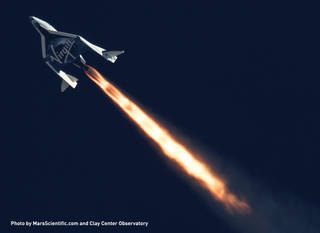
Past Flights
Virgin Galactic December 2018
Blue Origin NS-10 January 2019
Blue Origin NS-12 December 2019
Atmospheric pressure and composition are among the engineering variables considered in the design and construction of spaceflight vehicles and extraterrestrial habitats. Simply put, the costs of maintaining a pressure vessel at one atmosphere have been traded away throughout the history of spaceflight vehicle design and are traded away in future designs – yet the biological impacts of lower atmospheric pressure, especially on plants, is both profound and poorly understood. The objective of this research is to develop a refined understanding of the metabolic processes involved in plant responses and physiological adaptations to low pressure environments relevant to space exploration. The long-term goal of this line of research is a fundamental understanding of low pressure plant biology within exploration vehicles and structures, with a practical goal of producing plants that are specifically designed to thrive in low atmospheric pressures. The essential drivers of this project are the inescapable engineering limitations to producing orbital, lunar or Martian plant growth facilities that contain earth-normal atmospheric pressures, and the knowledge that plants do mount complex, and sometimes unexpected costly metabolic responses to hypobaria.
Revelent Publications
Plants experiencing spaceflight are quite normal in appearance but can exhibit growth habits distinctly different from plants on earth. Historically the spaceflight-induced differences were difficult to dissect due to changing hardware and flight conditions. During the APEX-TAGES experiments, we observed a remarkable number of gene expression changes during spaceflight that are associated with cell wall restructuring, especially in roots. We also observed, with the ABRS/Green Fluorescent Protein (GFP) imaging system, genetically dependent changes in root growth direction, movement and structure. (NASA Profile: TAGES)
Revelent Publications
TAGES-ISA involves experiments that specifically address growth and molecular changes in Arabidopsis that occur during spaceflight, bringing the molecular and genetic tools of Arabidopsis to bear on fundamental questions of root morphology, growth and cell wall remodeling.(NASA Profile: TAGES-ISA)
Revelent Publications
Beisel NS, et al., (2019). Spaceflight-induced alternative splicing... Npj Microgravity, 5: 9
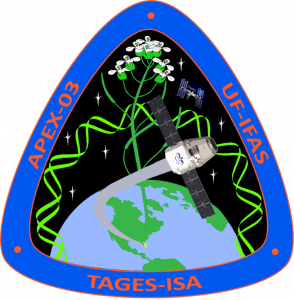
The Characterizing Arabidopsis Root Attractions (CARA) experiment looks at mechanisms at the molecular and genetic level that influence the growth of a plant’s roots in the absence of gravity, and how those change with or without light. Researchers expose one set of seedlings to light, keep another set in the dark, and then examine how each environment influences the patterns of root growth. Some of the plants are also imaged with the Light Microscopy Module on orbit, and at the end of the experiment, all plants are harvested by the astronaut, and preserved for their return to Earth in order to evaluate genes associated with plant responses on orbit. (NASA Profile: CARA)
Relevent Publications
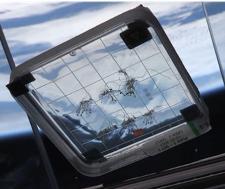
Plant production for advanced life support within deep space and extraterrestrial colonies has long been an appreciated area of technology development. Indeed ISS science is now is turning toward small scale plant production in space, and plant production units in extreme environments on earth have proven the value of fresh food. Utilizing lab experience in imaging, this project worked to develop a modified NDVI imaging system that could be used for controlled enviroments. EDEN ISS project by the German Aerospace Center (DLR) is designed to place an ISS-inspired module in the context of an established Antarctic station, drawing together for the first time structures and production units designed toward space vehicle formats together with the challenges of an extreme and isolated environment.
Revelant Publications
Tucker R, et al., (2020) NDVI Imaging within Space Exploration ... Life Sciences in Space Research
Beisel N, et al., (2018) Utilization of (SI-NDVI) ... Applications in Plant Sciences 6: e01186
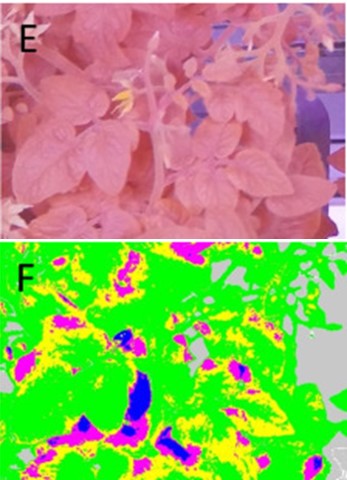
The Biological Research in Canisters (BRIC) hardware supports a variety of plant growth investigations. Biological Research In Canisters – 16: The impact of spaceflight on Arabidopsis: Deep sequencing and DNA Arrays as Collaborative Readouts of the Transcriptome of Arabidopsis Seedlings and Undifferentiated Cells in Space (BRIC-16-DNA) compares and contrasts the gene expression responses within two forms of Arabidopsis: whole, etiolated seedlings and undifferentiated cells in culture. The comparison of intact plants with cultures of undifferentiated cells shows that cells can detect space flight and gravity in the absence of tissue or organized developmental structures. (NASA Profile: BRIC 16)
The Biological Research In Canisters-17-1: Undifferentiated Cell development in Arabidopsis plants in Microgravity (BRIC-17-1) investigation focuses on the growth and development of cell cultures in microgravity. Specimens are preserved with a chemical fixative and returned to the ground for post-flight evaluation. (NASA Profile: BRIC 17)
Revelent Publications
BRIC 16
Paul A-L et al., Spaceflight transcriptomes...(2012) Astrobiology 12(1): 40-56
BRIC 17
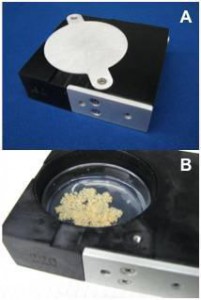
The Validating Telemetric Imaging Hardware for Crew-Assisted and Crew-Autonomous Biological Imaging project will test biological fluorescent imaging instrumentation for suborbital applications. The specific objective of this experiment is to take fluorescent imaging instrumentation developed for our shuttle and ISS experiments and calibrate the hardware and data collection capabilities to timeframes optimal for parabolic flight and suborbital applications. We build on extensive insights gained from spaceflight and ISS deployments of similar technologies, along with PI experience on previous parabolic flight campaigns, to address future science and technology deployments in parabolic and suborbital campaigns. This technology has longer term development potential for small satellite and planetary lander applications as well, and speaks directly to aspects of the Nanotechnology Road Map, particularly the development of sensitive, next-generation imagers that can collect data telemetrically, and in real time. Fluorescent protein-based, gene-expression techniques allow direct observation of how biological entities react to the stresses of spaceflight. (Flight Opprotunities Page: Telemetric Biological Imaging)
